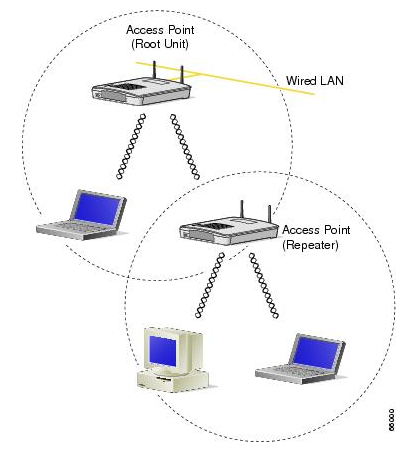配置和驗證AP功率
1、針對自主AP(Autonomous AP)
使用'power local'配置命令配置AP或Bridge Radio功率級別。
在2.4 GHz,802.11g Radio上,您可以設定正交頻分複用(Orthogonal Frequency Division Multiplexing,OFDM)功率電平和互補程式碼鍵控(Complementary Code Keying,CCK)功率電平。 802.11b和802.11g裝置支援CCK調製。 802.11g和802.11a裝置支援OFDM調製。
2.4-GHz Access Point Radio (802.11b)
power local {1 | 5 | 20 | 30 | 50 | 100 | maximum}
2.4-GHz Access Point Radio (802.11g)
power local cck {1 | 5 | 10 | 20 | 30 | 50 | 100 | maximum}
power local cck {-1 | 2 | 5 | 8 | 11 | 14 | 15 | 17 | 20 | maximum}
power local ofdm {1 | 5 | 10 | 20 | 30 | maximum}
power local ofdm {-1 | 2 | 5 | 8 | 11 | 14 | 17 | maximum}
5-GHz Access Point Radio (801.11a)
power local {5 | 10 | 20 | 40 | maximum}
power local { -1 | 2 | 5 | 8 | 11 | 14 | 15 | maximum}
power local { -1 | 2 | 5 | 8 | 11 | 14 | 15 | 17 | maximum}
1400 Series Bridge 5.8-GHz Radio
power local {12 | 15 | 18 | 21 | 22 | 23 | 24 | maximum} This example shows how to specify a 20-mW transmit power level for the 802.11b access point radio: AP(config-if)# power local 20
驗證傳輸功率:
使用'show controller dot11Radio'命令。 如下是一個例子。
此示例顯示如何顯示Radio 0介面的Radio Controller狀態:
AP# show controllers dot11radio 0
此命令的一部分輸出按速率顯示有效功率電平,如下所示:
1.0 to 11.0 , 20 dBm, changed due to regulatory maximum
6.0 to m15. , 17 dBm, changed due to regulatory maximum
m0.-4 to m15.-4, 14 dBm, changed due to regulatory maximum
-4表示40MHz寬頻。 類似的輸出,-4s意味著40MHz寬頻,短保護間隔開啟。
2、CUWN中配置AP的傳輸功率
要配置802.11網路中所有AP或單個AP的發射功率電平,請使用“config 802.11 txPower”命令。
config 802.11{a | b} txPower {global [auto | once | power_level]}
config 802.11{a | b} txPower {ap ap_name [global | power_level]}
此示例顯示如何為所有LAP手動將802.11b Radio發射功率設定為5級:
> config 802.11b txPower global 5
此示例顯示如何顯示802.11b傳輸功率開銷的配置和統計資訊:
> show advanced 802.11b txpower
Automatic Transmit Power Assignment
Transmit Power Assignment Mode.................. AUTO
Transmit Power Update Interval.................. 600 seconds
Transmit Power Threshold........................ -65 dBm
Transmit Power Neighbor Count................... 3 APs
Transmit Power Update Contribution.............. SN.
Transmit Power Assignment Leader................ xx:xx:xx:xx:xx:xx
Last Run........................................ 384 seconds ago

3、配置Radio傳輸功率
從特權EXEC模式開始,請按照以下步驟設定AP Radio的發射功率:
| Step 1 |
configure terminal |
Enter global configuration mode. |
| Step 2 |
interface dot11radio { 0 | 1 } |
Enter interface configuration mode for the radio interface. The 2.4-GHz radio is radio 0, and the 5-GHz radio is radio 1. |
| Step 3 |
power local These options are available for the 802.11b, 2.4-GHz radio:{ 1 | 5 | 20 | 30 | 50 | 100 | maximum }These options are available for the 5-GHz radio:{ 5 | 10 | 20 | 40 | maximum } |
Set the transmit power for the 802.11b, 2.4-GHz radio or the 5-GHz radio to one of the power levels allowed in your regulatory domain. All settings are in mW. Note |
| Step 4 |
power localThese options are available for the 802.11g, 2.4-GHz radio:power local cck settings:{ 1 | 5 | 10 | 20 | 30 | 50 | 100 | maximum }power local ofdm settings:{ 1 | 5 | 10 | 20 | 30 | maximum } |
Set the transmit power for the 802.11g, 2.4-GHz radio to one of the power levels allowed in your regulatory domain. All settings are in mW.On the 2.4-GHz, 802.11g radio, you can set Orthogonal Frequency Division Multiplexing (OFDM) power levels and Complementary Code Keying (CCK) power levels. CCK modulation is supported by 802.11b and 802.11g devices. OFDM modulation is supported by 802.11g and 802.11a devices. Note Note |
| Step 5 |
end |
Return to privileged EXEC mode |
| Step 6 |
copy running-config startup-config |
(Optional) Save your entries in the configuration file. |
使用no形式的power命令將電源設定恢復為最大值,即預設設定。
4、AIR-RM21A / AIR-RM22A無線電模組通常設定為最大發射功率
AIR-RM21A和AIR-RM22A Radio模組以分貝每毫瓦(dBm)測量發射功率,但Cisco Aironet AP中早期版本的802.11a無線電以毫瓦(mW)為單位測量功率。 由於mW的功率設定不直接轉換為dBm設定,因此在安裝新的AIR-RM21A或AIR-RM22A無線電模組時,AP通常使用預設功率設定。
表中列出了以mW為單位的802.11a傳輸功率設定以及接入點分配給新無線電模組的功率設定。
| 5 |
5 dBm (approximately 3 mW) |
| 10 |
maximum (17 dBm) |
| 20 |
maximum |
| 40 |
maximum |
5、限制關聯的客戶端的Power Level
你還可以限制與AP關聯的客戶端裝置上的功率級別。 當客戶端裝置關聯到AP時,AP將最大功率電平設定傳送到客戶端。
從特權EXEC模式開始,請按照以下步驟在與AP關聯的所有客戶端裝置上指定最大允許功率設定:
| Step 1 |
configure terminal |
Enter global configuration mode. |
| Step 2 |
interface dot11radio { 0 | 1 } |
Enter interface configuration mode for the radio interface. The 2.4-GHz radio is radio 0, and the 5-GHz radio is radio 1. |
| Step 3 |
power clientThese options are available for 802.11b, 2.4-GHz clients:{ 1 | 5 | 20 | 30 | 50 | 100 | maximum}These options are available for 802.11g, 2.4-GHz clients:{ 1 | 5 | 10 | 20 | 30 | 50 | 100 | maximum}These options are available for 5-GHz clients:{ 5 | 10 | 20 | 40 | maximum } |
Set the maximum power level allowed on client devices that associate to the access point. All settings are in mW. Note |
| Step 4 |
end |
Return to privileged EXEC mode. |
| Step 5 |
copy running-config startup-config |
(Optional) Save your entries in the configuration file. |
使用no形式的client power命令禁用關聯客戶端的最大功率級別。
注意必須啟用Aironet擴充套件以限制關聯客戶端裝置的功率級別。 預設情況下啟用Aironet擴充套件。
https://community.cisco.com/t5/wireless-mobility-documents/how-to-configure-and-verify-the-transmitted-power-level-on-aps/ta-p/3107653
